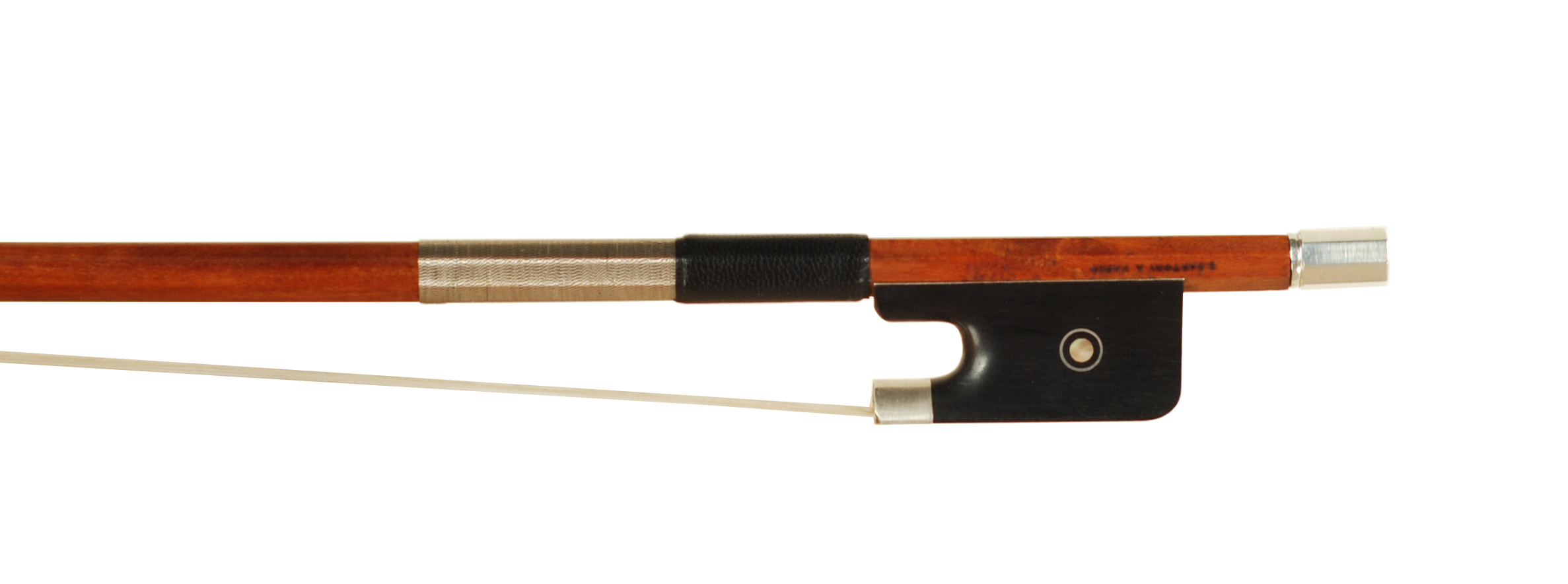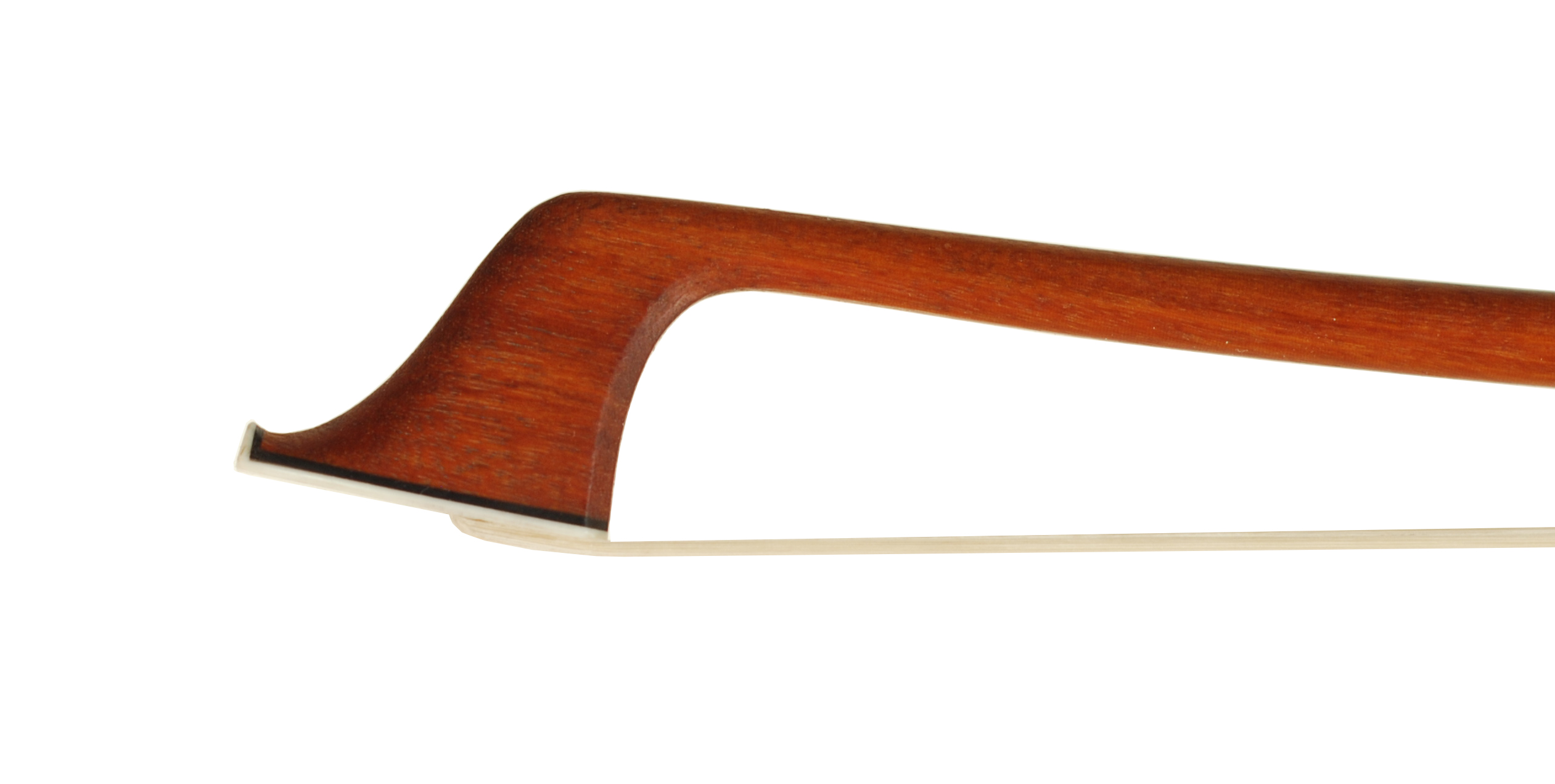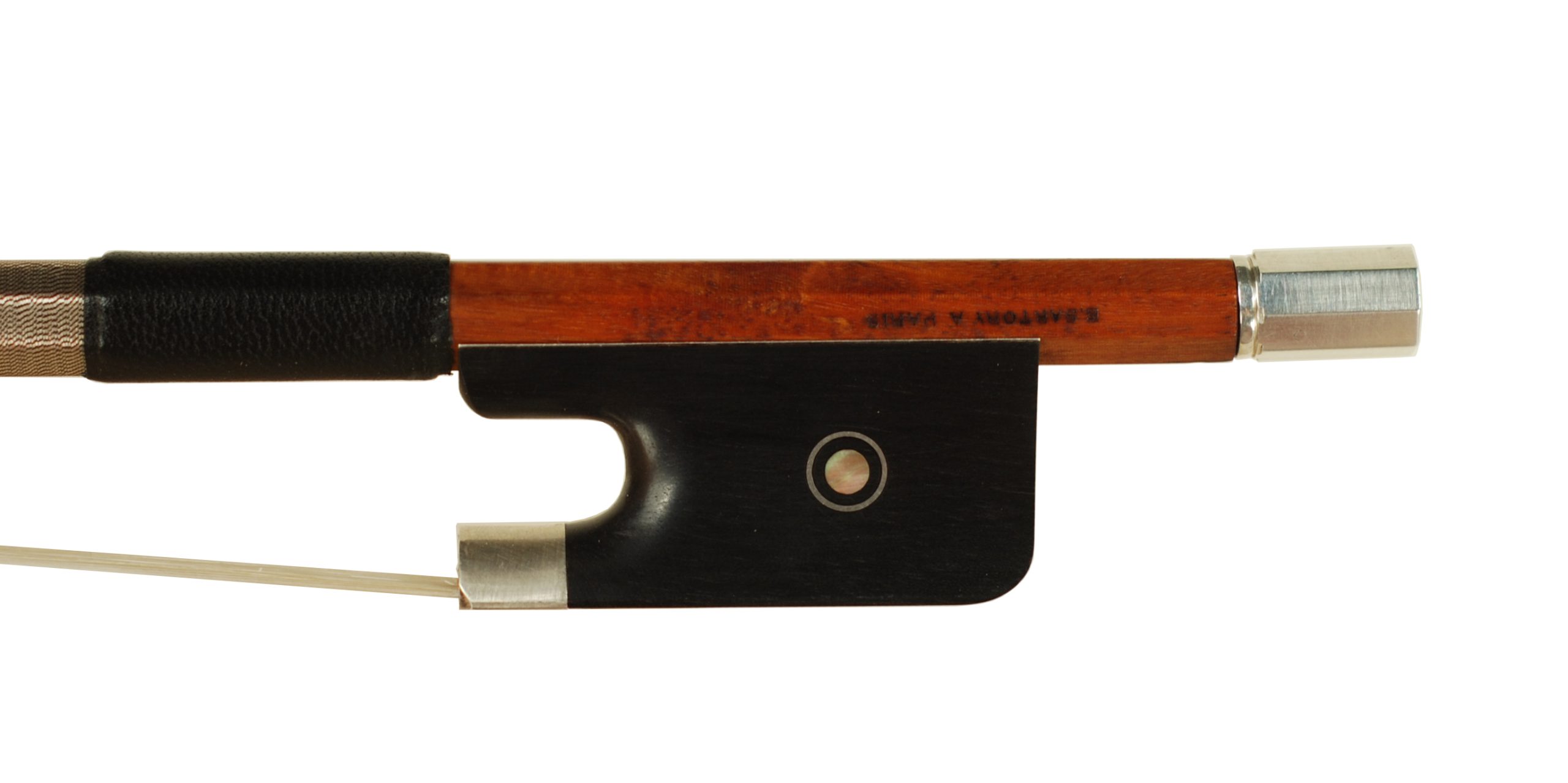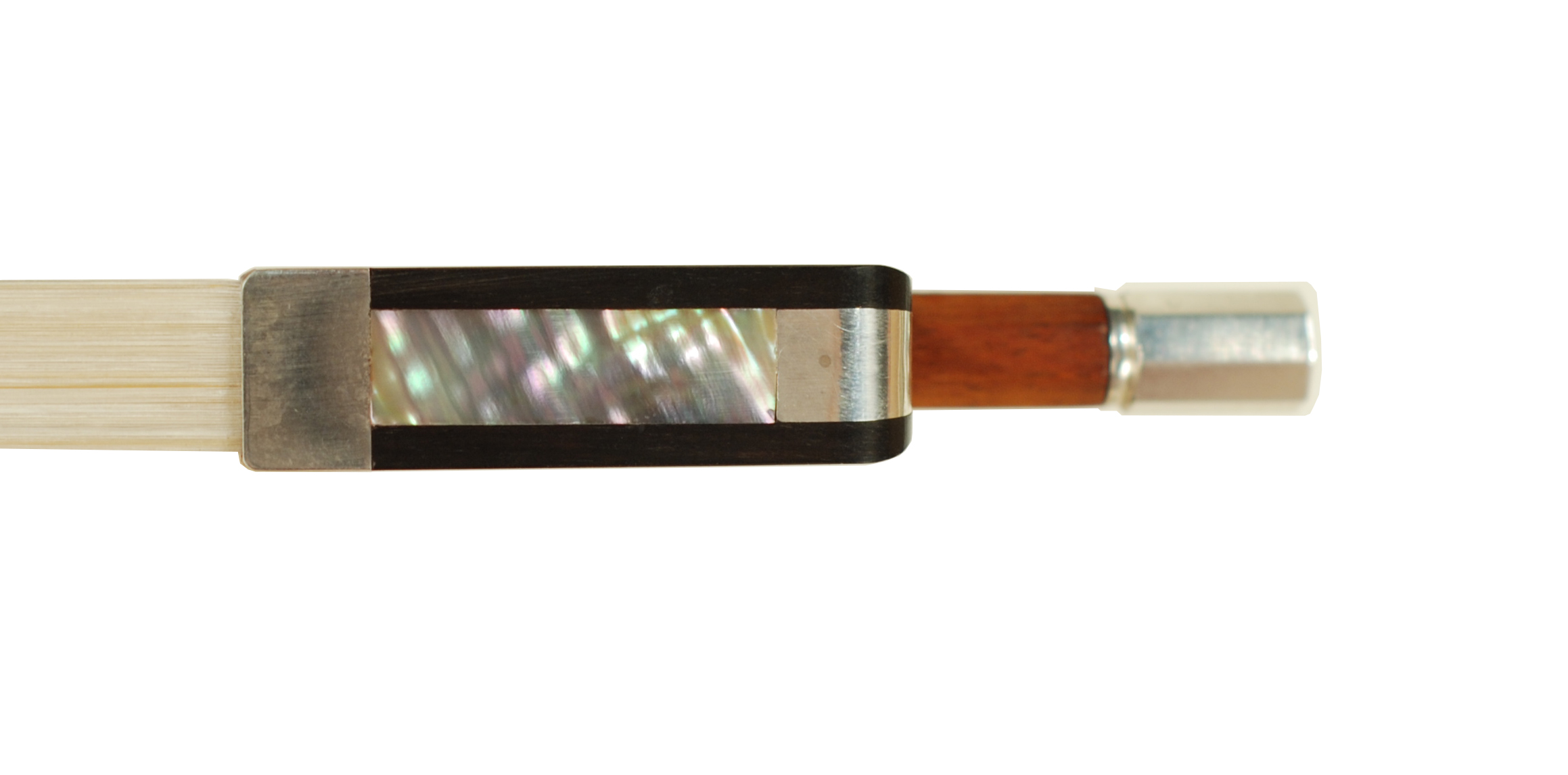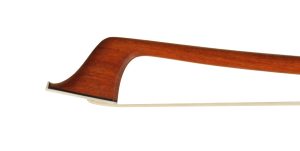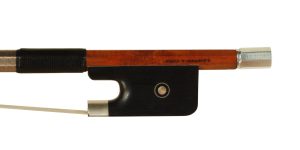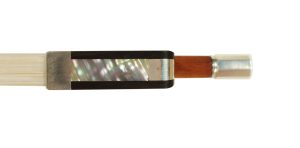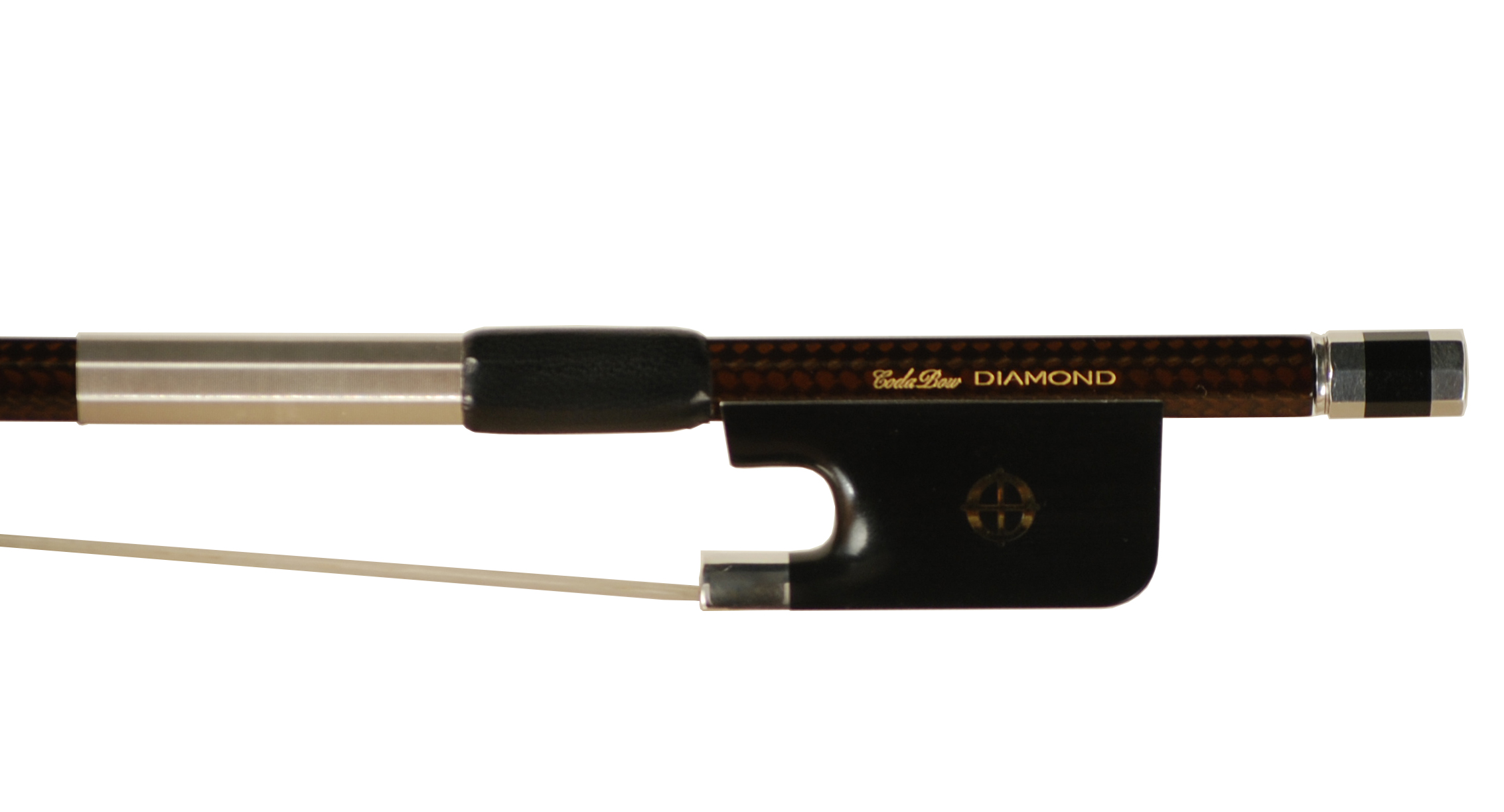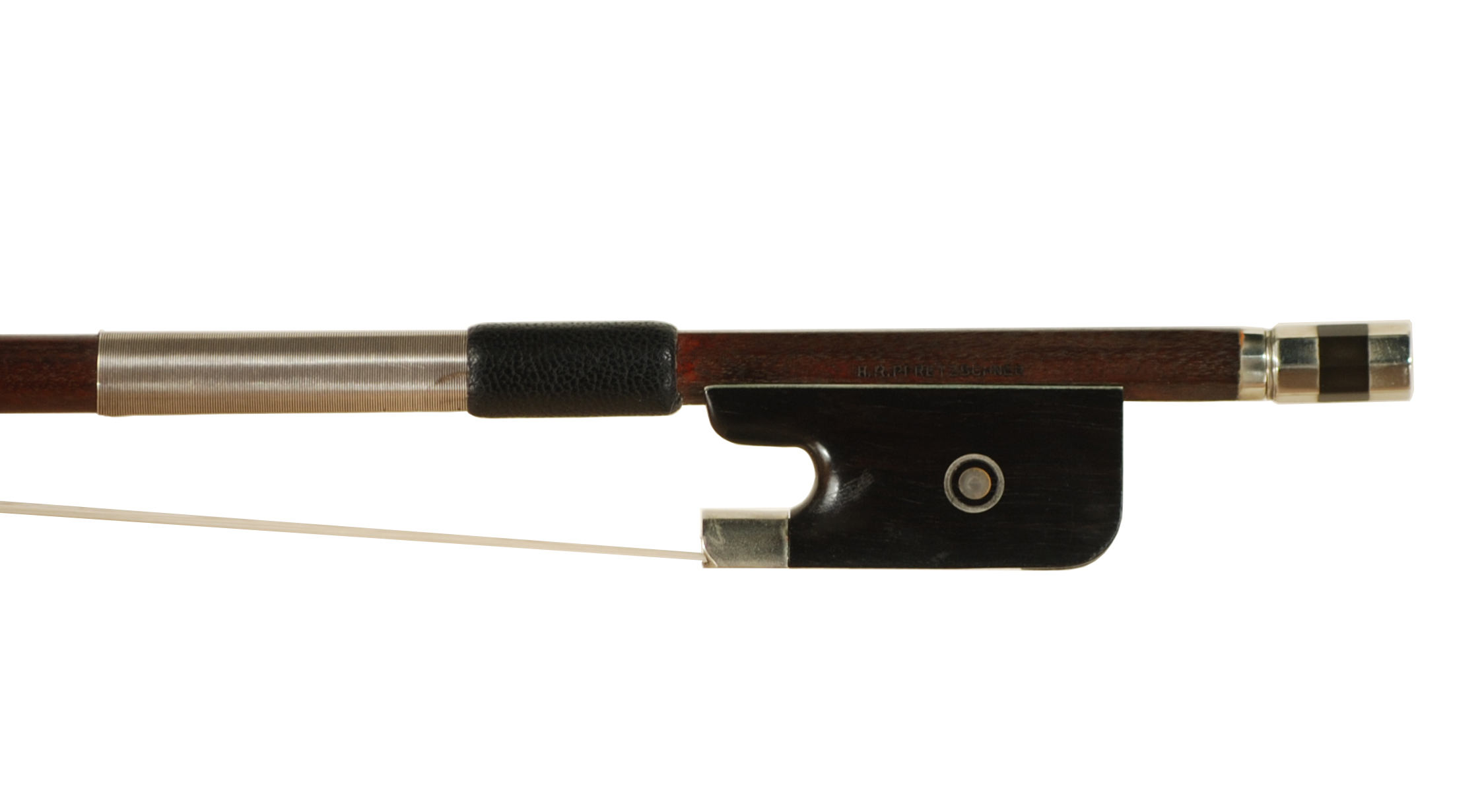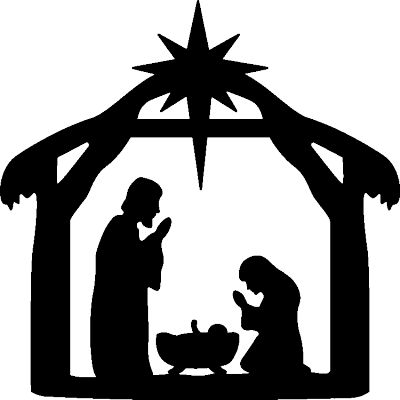Cello Bow Stamped – E. Sartory A Paris – American/European circa 1985-1995 – Exquisite Pernambuco! – SOLD November 14, 2025 –
$3,200.00
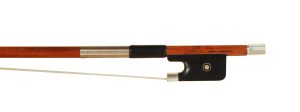
Stamped:
We have an excellent copy of a Eugene Sartory A Paris cello bow. If you are going to copy a nice bow it might as well be a fine French maker. This bow was a second stick I purchased in an estate from a former cello player in California. The cellist’s wife told me about this bow and another her husband had specially made that were in an old wooden bow box handmade for the sticks. The wood for the bows came from a large pile of pernambuco at some lumberyard in Los Angelos. The cellist commissioned two cello bows to be made after seeing the wood that the maker had. The pernambuco on both sticks is identical in strength, grain, and look, as well as the brands are similar in stature and length, just different names. The other cello bow is stamped Charles Bazin and is already up on our website. I purchased the entire instrument collection from the estate in the late 1990’s. The player had nice stuff, with many French and German violin and cellos bows. These two cello bows look to me to be made by the same hand and the wood is identical orange/brown tight-grain pernambuco. At first, I thought the bow may have been made by one of the Voller brothers from England. The three brothers were known for their detail work and were renowned violin copyists from the late 1800’s and early 1900’s. They made instruments – fine copies of Italian masters that were so good that they sometimes fooled even experts of their time. In my research I could not find that they spent time on bows, especially cello bows.
Pernambuco was the choice wood by bowmakers for almost 270 years, when it first made its way to Europe. Brazil is the only place in the world that this species grows. This wood is currently not allowed to be exported from Brazil. The Brazilian government has declared and passed laws banning the sale of the wood in any form, even if a bow was made decades ago. The wood is considered an endangered species in Brazil.
This stick and the significant wood selection for this bow and the other cello bow were not made by an amateur bow maker. This had to be a seasoned bow maker, possibly from southern California. I just don’t know. It is not a real Sartory but the detail on the copyist’s bow is beautiful to see. The brand is very small, all caps and inverted on the player’s side and there is no country of origin stamped on the bow.
The bow has a Parisian eye frog, is sterling silver mounted, and round in section. The stick is a strong piece of pernambuco, proportioned beautifully, and balanced. It is completed with a sterling tinsel silver winding and a sold silver end cap with one turn in the collar for the button. I’m more than impressed with the detail and craftsmanship of the stick. Everything on the bow is original: tip, frog, and the winding which is silver tinsel thread. It is very interesting, and I don’t think it’s a coincidence, that both cello bows have the exact 75.0 mm tinsel winding length. Exact. The thumb leathers on each are at different lengths. This checks off another box that this bow and the Bazin copy cello bow were made by the same hand. The head is masculine, and the camber formulates quickly after the head and is noticeably strong. The orange/brown color on this bow is the same color to that of the Charles Bazin cello bow. The tinsel winding was used to manage the weight, keeping the overall gram weight of the bow on the lighter side. If full sterling wire were used for the winding the bow would have an overall gram weight that is 3.2 grams heavier. The bow is nicely over 80.0 grams at 80.5 grams and feels like sweet butter in the hand, light and easy to control. It’s an excellent playing stick that will find its way into someone’s cello case and be a gem to help drive sound off a cello.
Weight fully haired 80.5 grams
